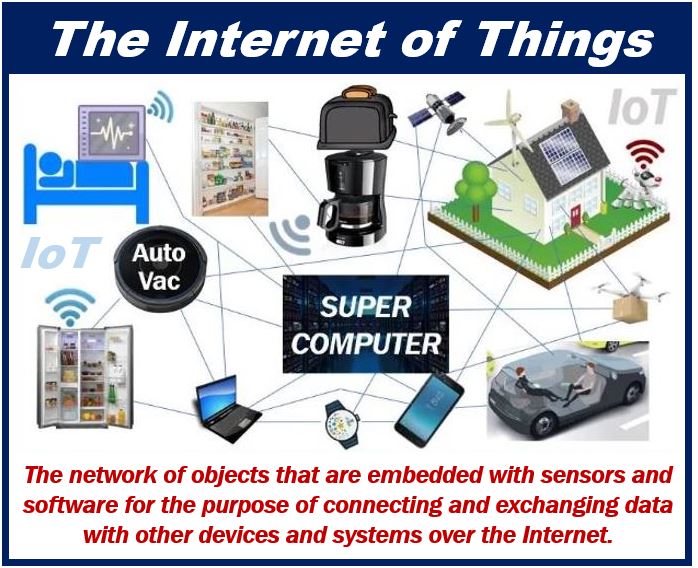Over the years, IoT has witnessed significant growth. From powering supply chains to enhancing edge data processing, IoT has become firmly established in the enterprise ecosystem.
It has firmly emerged from its pilot years and is now a key driver of business value in organizational processes and operations, and most of all transformation.
This article discusses current and potential applications of IoT in business and industry, as well as what the next generation of IoT design should focus on, with an emphasis on security.
First of all, connected devices go way beyond extended sensors; effectively IoT is a technology that lives at the intersection of other innovative technologies such as artificial intelligence, machine learning, data analytics, cloud computing, edge computing, 5G, and even mixed reality.

Thus, IoT offers a great potential for scalable growth, already being achieved by large enterprises but now being explored by small to medium-scale businesses.
Supply Chains and Industrial IoT
For supply chains, connected devices enable real-time monitoring and comprehensive visibility of assets and field operations. Also, via data analytics, they ensure predictive analysis.
Through automation and IoT devices interoperability, preventive and corrective maintenance actions can be carried out quicker and more efficiently. This improves productivity across the supply network.
In addition, IoT applications in asset tracking and inventory management can help businesses to recoup losses on items missing in transit. They also improve operational efficiency by managing every change in the inventory.
Edge Computing and IoT
Edge computing is among the key business trends driving the future of business operations. Combine its power with IoT devices; the results are immense.
On the consumer side, IoT smart devices offer great potential in the adoption of edge computing as against cloud computing.
Although, technically, edge computing and cloud computing are not exactly interchangeable, being able to leverage the former for smart devices results in greater reliability and faster response times since edge computing processes time-sensitive data better.
Also, by bringing computation and data storage to the device, rather than a remote server, edge computing solves a major problem of cloud computing: latency.
By adopting edge computing/devices, businesses can deliver better and faster solutions to users, while also reducing operational costs.
Data Analytics and IoT
Perhaps the most obvious benefit of IoT devices is that businesses can access more data from multiple sources and leverage such data to understand the current state of their operations better, as well as how to improve.
This affects both customer data and business operations data. For one, every customer-centric business relishes every opportunity to learn about their customers better, their needs and desires, and how to serve the market more productively.
In this way, IoT combines with data analytics to empower businesses to grow through data insights. Businesses can share IoT data across the ecosystem to continually engage stakeholders and partners on paths to innovation.
Thus, beyond marketing improvement, IoT can enable organizations to introduce new creative solutions. Ultimately, this results in a better customer experience for users and more revenue for the business.
A real game-changing application of IoT to business processes is visibility, through collecting real-time data on process, operations, assets, and people.
The Future of Enterprise IoT (Cybersecurity)
Perhaps the biggest threat to organizations today is cybersecurity. Hence, a major concern for IoT manufacturers and PCB assemblers is building IoT devices with security by design.
Traditional IoT designs have considered security but only as a ‘feature’, rather than something that is part and parcel of the design itself.
Just like edge computing brings processing closer to the endpoints, security should begin with the devices themselves.
That IoT devices collect more data means that the potential attack surface is wider and data is less safe since it’s ‘everywhere’, so to say.
Conceiving security throughout the IoT design and PCB assembly process from prototyping to production enables the development of devices that are more resilient security-wise. In addition, enabling OTA updates eases the challenge.
Conclusion
You can measure the impact of technology in the enterprise space by how it causes business transformation and makes leaders rethink their approach to business. IoT is doing this at scale.
As such, leaders should also rethink IoT devices beyond tracking sensors. Combined with powerful technologies such as data analytics and edge computing, IoT can find valuable applications in the business space.
Presently, IoT devices are growing practical applications in small and medium-scale businesses and the momentum would continue to rise.
Interesting related article: “What is Cybersecurity?“

